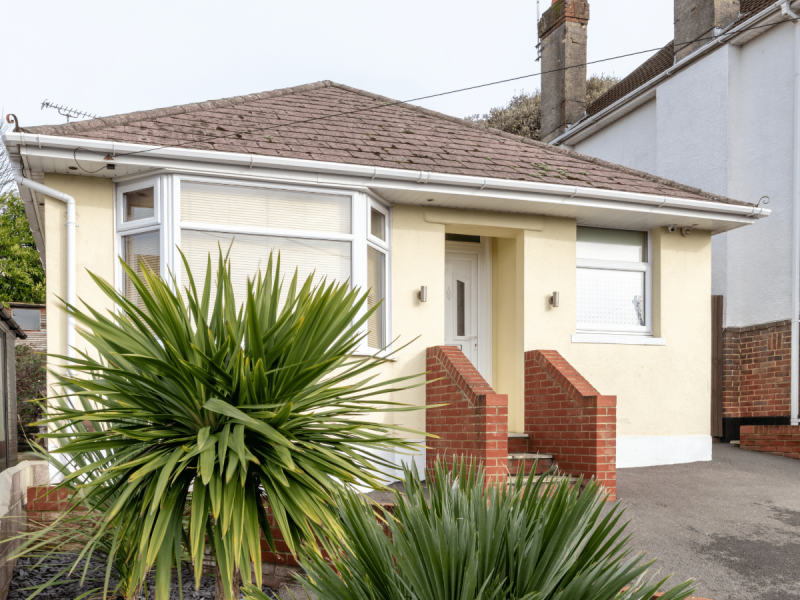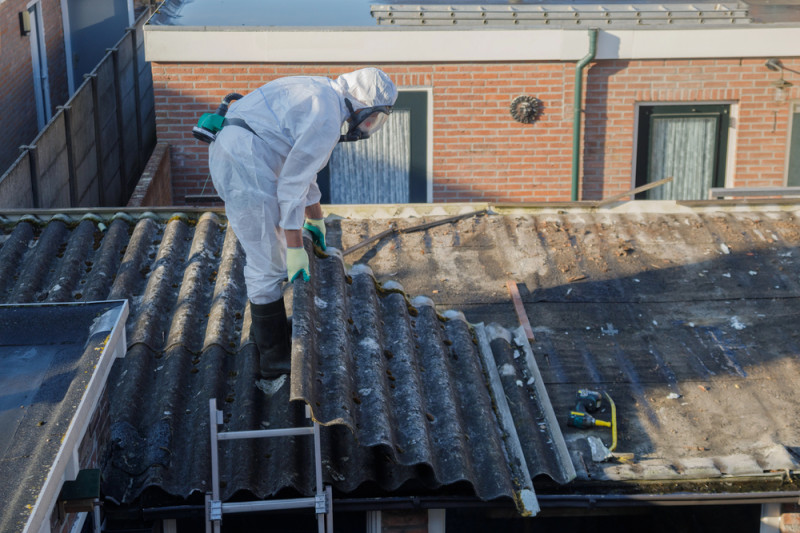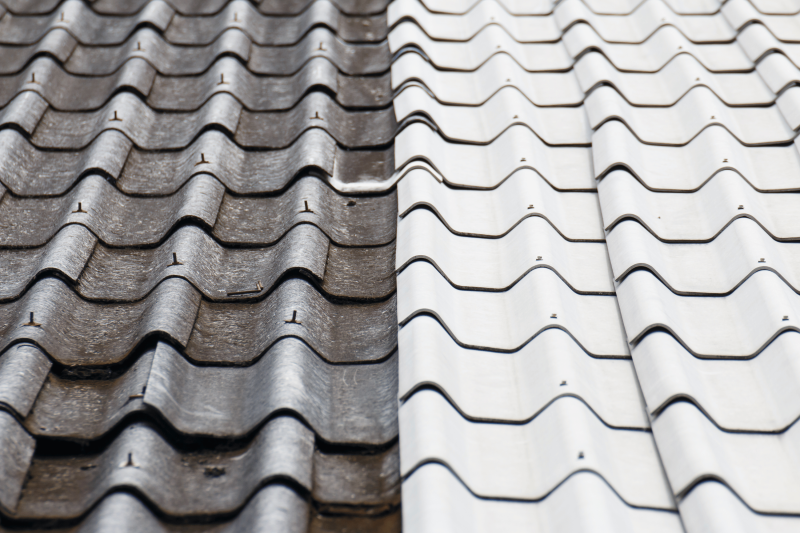Before the dangers of asbestos were fully understood, it was considered one of the most versatile materials available for home construction. Its natural resistance to heat, fire, and sound made it an attractive choice for builders looking to improve household comfort and safety. As a result, asbestos quietly became a standard ingredient in many everyday building materials, including carpet underlay, fences, roofs and walls.
Why was asbestos used in carpet underlay?
Asbestos was widely used in carpet underlay from the 1950s to the 1990s in Perth because of its unique insulating and fire-resistant properties. Manufacturers added asbestos fibres to felt and hessian underlays to create a durable, heat-resistant barrier that helped improve warmth and soundproofing in homes. It was cheap, abundant, and seen as a practical solution for reducing noise and preventing the spread of flames.
At the time, the health risks of asbestos exposure were not well understood, so it became a standard material in many building and flooring products. We now know that disturbing these underlays releases hazardous fibres that pose serious long-term health risks.
How to tell if your carpet underlay contains asbestos
It’s important to note that asbestos carpet underlay isn’t always visible, and in most cases, you won’t be able to tell for sure without having a professional asbestos inspection carried out on your flooring. However, there are a few signs that may indicate your carpet underlay contains asbestos, and thus, you should consider booking an inspection.
1. Your home was built before 1990
Homes built before 1990 fall into the highest risk category for asbestos-containing carpet underlay, as it was commonly used. If your home’s original flooring is still intact or has only ever been re-carpeted, rather than completely replaced down to the subfloor, there’s a strong likelihood the old underlay remains underneath.
2. The carpet underlay looks like old felt or “hair-felt” material
Asbestos in carpet underlay often appears as an old, fibrous felt or what some call “hair-felt” material, a coarse, matted mix that can look harmless at first glance. This type of carpet underlay was commonly made from recycled textile fibres and sometimes blended with shredded jute or even animal hair.
3. Your home contains old hessian bags
Prior to the 1990s, recycled hessian bags that once stored asbestos materials were commonly repurposed to make carpet underlay. These bags were often stitched together beneath carpets, creating a layer that looked harmless but concealed dangerous asbestos fibres. Therefore, if your home has old hessian bags lying around in storage spaces, this may be a sign that your flooring was constructed with them.
4. You can see black adhesive
Another sign that may indicate asbestos carpet underlay is the presence of black adhesive. You can sometimes see a black adhesive under old carpet underlay, which was commonly used to secure flooring materials in place. Over time, the glue can become brittle and flaky, releasing dangerous fibres if disturbed. It’s often found beneath vinyl tiles, carpet underlay, or lino, and should never be sanded, scraped, or removed without professional testing and safety precautions.
Dangers of disturbing asbestos carpet underlay
Disturbing asbestos carpet underlay can release microscopic fibres into the air, posing serious health risks when inhaled. According to Safe Work Australia, asbestos exposure is linked to life-threatening diseases such as mesothelioma, asbestosis, and lung cancer.
These fibres are invisible to the naked eye and can remain airborne for long periods, making even minor disturbances, like removing old carpet, sanding floors, or scraping adhesive, potentially dangerous.
Once airborne, asbestos particles can contaminate surrounding areas and be inhaled by anyone nearby. The safest approach is to avoid disturbing suspected materials and contact a licensed asbestos removal professional for inspection and safe disposal.
What to do if you suspect asbestos in your carpet underlay
If you suspect that your carpet underlay contains asbestos, it’s important not to touch, move, or attempt to remove it yourself. Disturbing old asbestos carpet underlay can release asbestos fibres into the air, which are invisible and hazardous when inhaled.
The safest approach is to leave the material undisturbed and contact a licensed asbestos assessor or removalist, like Rapid Asbestos Removals, for asbestos testing and advice. They can take a small sample safely and confirm whether asbestos is present. If asbestos is detected, professional removal will ensure the area is properly contained, cleaned, and disposed of according to Western Australian safety regulations.
Avoid attempting to remove or cut into the asbestos carpet underlay, as this could disturb asbestos fibres further. Always prioritise safety and call in the experts before starting any renovation or flooring work in older homes.
FAQ
Asbestos carpet underlay often looks like an old, dirty felt or coarse “hair-felt” material. It can appear grey, brown, or off-white, with a rough, fibrous texture. Some versions were made from recycled fabric or jute mixed with asbestos fibres for insulation and strength.
In older Perth homes, it may look like compressed padding that’s breaking down or covered in dust. Because it can resemble ordinary old underlay, the only safe way to confirm asbestos is through professional testing.
However, it’s important to note that in most cases, asbestos carpet underlay is very difficult to identify by sight alone. The material often looks similar to ordinary felt or jute padding, making visual inspection unreliable. If you’re ever unsure, the safest approach is to have the underlay professionally tested and confirmed by a licensed asbestos assessor before carrying out any removal or renovation work.
Asbestos-containing carpet glue, also known as adhesive or “black mastic,” usually appears as a dark brown or black tar-like substance. It may look shiny when fresh but dull and brittle as it ages. In some cases, it can have a thick, sticky texture or appear as dry flakes beneath old carpet or vinyl flooring. This type of adhesive was widely used before the 1990s, especially for securing carpet tiles and underlays. Never scrape or sand it, as this can release asbestos fibres into the air.
You should never attempt to clean asbestos from carpet underlay yourself. The safest action is to avoid disturbing the material and contact a licensed asbestos professional. They use specialised equipment and protective gear to safely remove and decontaminate affected areas. Once asbestos is confirmed, the contaminated underlay and any surrounding dust should only be handled and disposed of by trained experts following strict health and safety regulations.
Yes, if asbestos is confirmed, removal by a licensed professional is recommended. Leaving asbestos underlay in place can pose health risks if it’s damaged or disturbed during renovations, flooring replacement, or even general wear and tear.
If you do choose to keep your asbestos carpet underlay, it’s essential to disclose this information when selling your property with asbestos, as required by Australian property disclosure laws. Therefore, leaving the asbestos carpet underlay may impact your sale price.
Professional removal ensures the material is safely contained, the area properly cleaned, and disposal handled in compliance with Western Australian asbestos regulations. This not only protects your household’s health but also preserves your property’s long-term safety.
No, you should never remove asbestos carpet underlay yourself. Even minor disturbance can release microscopic asbestos fibres, which are dangerous when inhaled. DIY removal is illegal in many situations and can lead to contamination throughout your home. Instead, contact Rapid Abestos Removals who has the right equipment, training, and protective measures to safely handle and dispose of the material. It’s the safest and most responsible option for protecting your health and complying with local laws.


